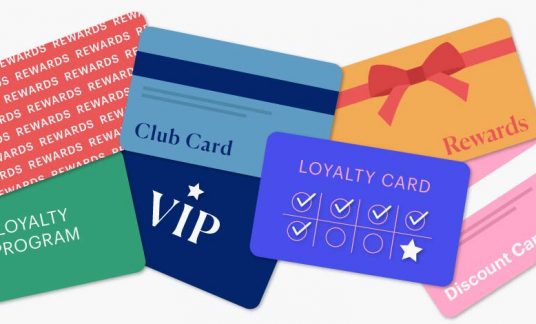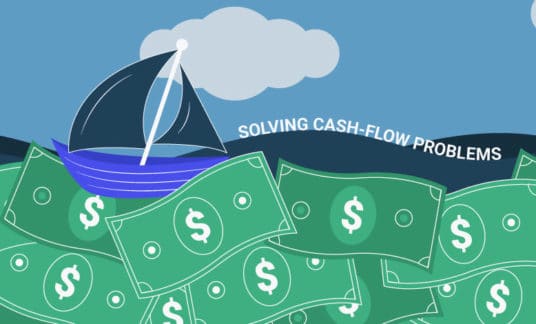Did you know that 86% of buyers, according to research from American Express, are willing to pay more for better customer experience (CX)? In fact, according to a report from Adobe and Econsultancy, customer experience is set to overtake price and product as the key brand differentiator and is rated by many executives as the single most exciting opportunity for their organizations in 2021.
Check out what customer experience is, why it’s so important for your business, how it’s different from customer service, how it’s measured and, most importantly, top customer experience strategies you should implement to attract more customers and increase sales.
What Is Customer Experience?
The customer experience is the result of every interaction that happens between a customer and an organization throughout a business relationship. It’s defined by your customers’ holistic perception of their experiences with your brand at every stage of the customer journey — from navigating the website and interacting with customer service to receiving the product or service and getting post-purchase support. Every interaction contributes to shaping the customer experience, which affects buyers’ decisions on whether to return to your business.
Why Is Customer Experience Important?
Great customer experience is essential if you want to generate more sales in today’s competitive business environment.
- A study by Oracle found that 74% of senior executives believe customer experience determines whether a customer will become an advocate for the brand. Loyal customers who make repeat purchases not only tend to have higher average order value and customer lifetime value, but they’re also more likely to tell others about your company.
- A great CX helps increase customer retention rates. Research from Invesp reports it can cost 5 times as much to acquire a new customer than to retain an existing one. Having more repeat customers can increase profits by lowering costs associated with customer acquisition.
- By increasing customer satisfaction, you’ll generate more positive reviews, better word-of-mouth marketing and more customer referrals. Displaying positive reviews can boost conversion rates by 270%, according to joint research from PowerReviews and Northwestern University’s Spiegel Research Center.
- A 2017 Segment survey found 49% of buyers made impulse purchases after receiving a personalized recommendation from a brand.
Customer Service vs. Customer Experience
Customer service is one of the many components of the entire customer experience; it’s the point at which a customer receives direct assistance from your company before, during or after making a purchase.
Customer experience, on the other hand, goes beyond 1-to-1 interactions between a customer and a company representative. Thanks to the latest digital technologies, brands can augment the customer experience through various channels (e.g., website, social media, live chat) and build relationships with consumers without 1-to-1 interactions.
Measuring Customer Experience
To measure the effectiveness of your customer experience strategy, you need to set benchmarks and gauge how it performs over time. Here are the most commonly used metrics for tracking customer experience:
- Customer Effort Score (CES): Measures how “difficult” or “easy” it is for customers to complete an action when they interact with your product or service.
- Net Promoter Score® (NPS): A customer loyalty score derived from asking customers 1 question: “On a scale from 0 to 10, how likely are you to recommend this product/company to a friend or colleague?” The score is calculated based on the number of promoters vs. detractors and is expressed as an absolute figure between -100 and +100.
- Customer Satisfaction Score (CSAT): A survey that measures customers’ satisfaction level with a product or service by either ranking it on a 5- or 7-point scale or answering yes/no questions. To calculate your business’s overall score, divide the number of satisfied customers by the number of customers who were surveyed, then multiply that number by 100.
- Time To Resolution (TTR): The average length of time it takes to resolve an issue or ticket, which is typically inversely proportional to the frustration customers experience during the process.

Top Strategies To Improve Your Customer Experience
The key to creating an outstanding customer experience journey is to understand your customers’ specific needs, habits and preferences so you can deliver what they want, when they want it, with as little friction as possible. Here are some top strategies for building a positive customer experience:
Mobile-First Experience
As more people are using mobile devices to search for and purchase products or services, your website’s mobile experience will either engage prospects or turn them away. You should have a mobile-first website strategy and make sure the site is user-friendly on all commonly used devices.
If appropriate, improve your brand experience by offering a mobile app. Also, use mobile-optimized features (e.g., tap-to-call, geofencing, push notifications, auto-fill) to enhance the user experience, reduce friction in the purchasing process and drive foot traffic to your physical locations.
Omnichannel, Real-Time Interactions
Customers expect to interact with your brand whenever and wherever they want through their preferred platforms (e.g., website, email, phone, social media, live chat, messaging apps, etc.) They also want the ability to switch channels halfway through an interaction and pick up exactly where they’ve left off, without missing a beat.
To deliver real-time customer support via multiple touchpoints, you need a centralized customer data management platform that allows you to update 360-degree customer profiles in real time. This enables delivering a seamless CX, no matter how a customer chooses to interact with your brand.
Hyper-Personalization
According to Epsilon Marketing, 80% of consumers are more likely to make a purchase when brands offer personalized experiences. In fact, delivering a personalized shopping experience can help you reduce acquisition costs by up to 50%, increase revenues by 5–15% and improve the cost-efficiency of your marketing spend by 10–30%, Adweek reports.
Based on the information in the customer data management system, you can implement various personalization and segmentation strategies to deliver targeted content and offers via your website, email, online ads, social media and 1-on-1 interactions (e.g., phone, live chat) to augment the customer experience.
Customer Self-Service
Today’s consumers want assistance right away when they need it. According to a survey from Nuance Enterprise, 67% of respondents said they prefer to use a self-service option rather than speaking to a company representative. A Coleman Parks for Amdocs study showed 91% of respondents would use an online knowledge-base, if available. Automating customer service not only helps you meet customer expectations but also reduces overhead costs.
Most of today’s customer support platforms (e.g., Zendesk) offer self-service features such as an FAQ page, online knowledge base, forum and chat. The use of AI-drive technologies helps further streamline workflows so customers can get their answers right away via live chat and messaging apps or have their questions routed to the correct agents for prompt resolution.
How To Deliver an Outstanding CX With a Customer Experience Program
Implementing a customer experience program is the key to delivering an on-brand, consistent and high-quality CX. Although the components of CX programs may vary depending on the target market and the business objectives, the foundation is the same. You need to build a customer-centric organizational culture, support it with the right business structure and listen to your customers.
The ultimate objective of any customer experience program is to ensure that customer interactions across all channels are creating a brand experience that augments the audiences’ impression and relationships with your brand.












